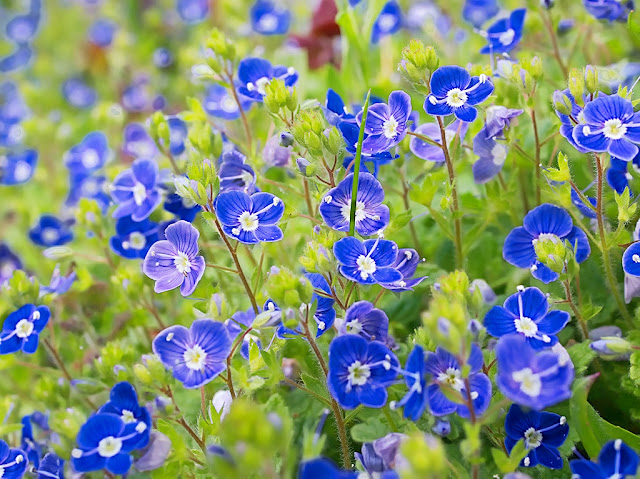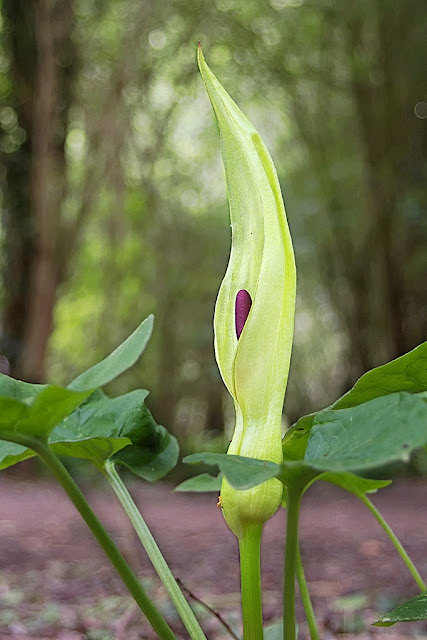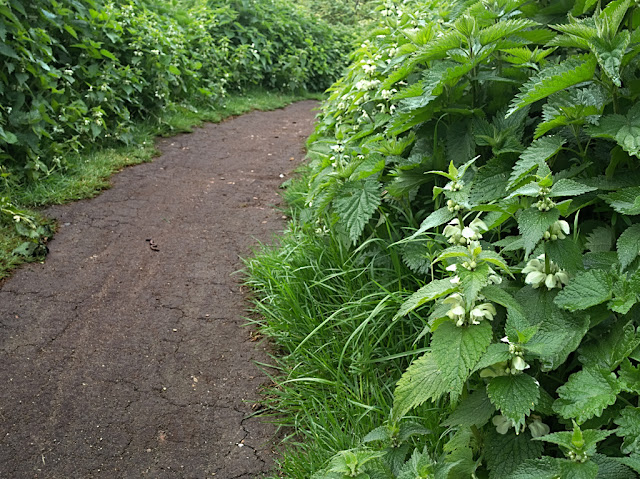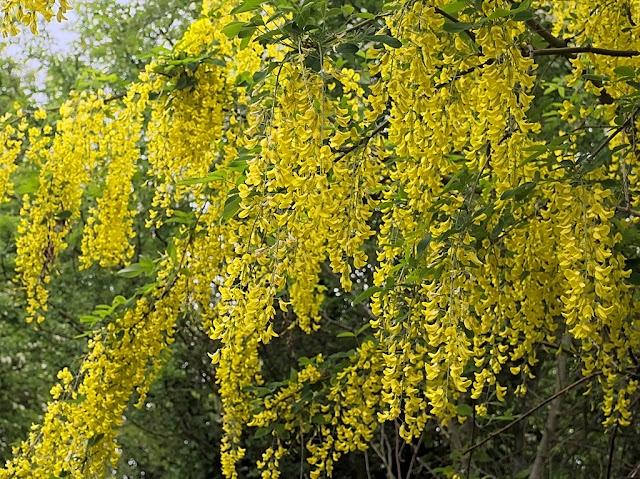 | |
| Golden Rain - 4 May 2017 This picture clearly shows how appropriate the name 'Golden Rain' is. |
But beware! This beautiful bush has a reputation for being highly poisonous. Although all parts of the bush are toxic, the main danger is to children who eat the seeds as they would eat peas. Symptoms range from nausea to, more frighteningly, convulsions, frothing at the mouth, and going into a coma. Fatalities are extremely rare.
 |
| Path besides Dickerson's Pit - 4 May 2017 The bright yellow flowers eclipse the white hawthorn behind. |
As with many plants of late introduction into Britain, there is very little folklore associated with the laburnum, which was first cultivated here in the mid sixteenth century. One snippet that I found interesting, is that a laburnum will fail to flower if a neighbouring tree is removed.
Medlar Tree
 |
| Medlar Flower - 11 May 2017 Single flowers are almost hidden among the full grown leaves |
My next tree, the medlar, certainly does not challenge the dominance of the hawthorn. A single tree is situated at the southern end of the orchard. Its blossom is almost hidden by its leaves, which are full grown by the time its single white flowers are out.
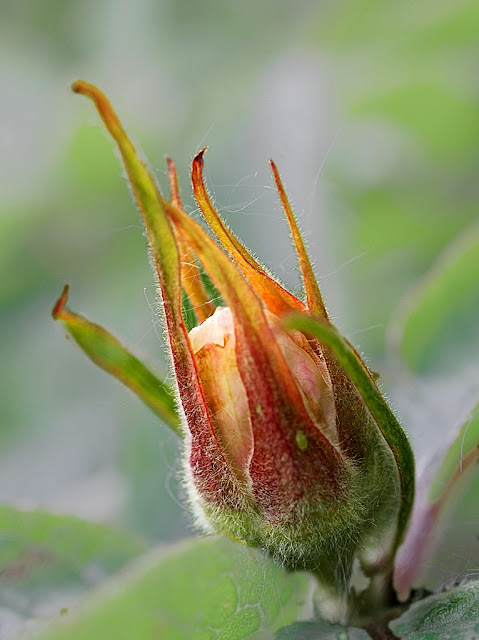 |
| Medlar Flower Bud - 11 May 2017 |
I have included in this post, not because of its visual impact, but because its name intrigues me. To me, it sounds medieval, conjuring up the age of chivalry, of knights in armour, and grand banquets. It is certainly old. The medlar, which has been cultivated for thousands of years, was first brought to England in the eleventh century.
But it is not possible to discuss the medlar's name without considering its fruit. 'Medlar' is thought to be derived from the French 'Medler', and means nothing more than the fruit of a small fruit bearing tree?!
 |
| Medlar Fruit - 6 September 2016 |
One alternative name is 'open-arse' or 'openaers', derived either from the appearance, or the laxative properties of the fruit. The French also have an alternative name 'cul-de-chien' or 'Dogs Arse'.
It is with the more vulgar name that the medlar first found its way into English literature: in the prolog to the Reeves Tale, Chaucer uses the term 'open-ers' or 'openarse'. Later, Shakespeare was to use both 'medlar' and 'open-arse' in a single speech in Romeo and Juliet. In modern literature, D H Lawrence continued the faecal reference, when, in one poem, he described the medlar as: "Wineskins of brown morbidity, autumnal excrementa".
Wayfaring Tree
 | |
| Wayfaring Tree Flower Head - 23 April 2017 |
Another tree which flowers in late April or early May is the wayfaring tree. There are just a few of these tree in the hedgerows at the north end of the park, their white flowers overwhelmed and easily overlooked among the apple and hawthorn blossom. I only spotted them for the first time this April, after more than two years of paying close attention to the plant life in the park.
 |
| Path by Wetlands - 23 April 2017 Wayfaring tree embedded in one of the hedges at the north end of the park |
'Wayfaring Tree' is another of those traditional English names which I find so evocative. The name was given to it by Gerarde, describing its habit of growing by the wayside.
Next: May Day and Hawthorn Blossom

